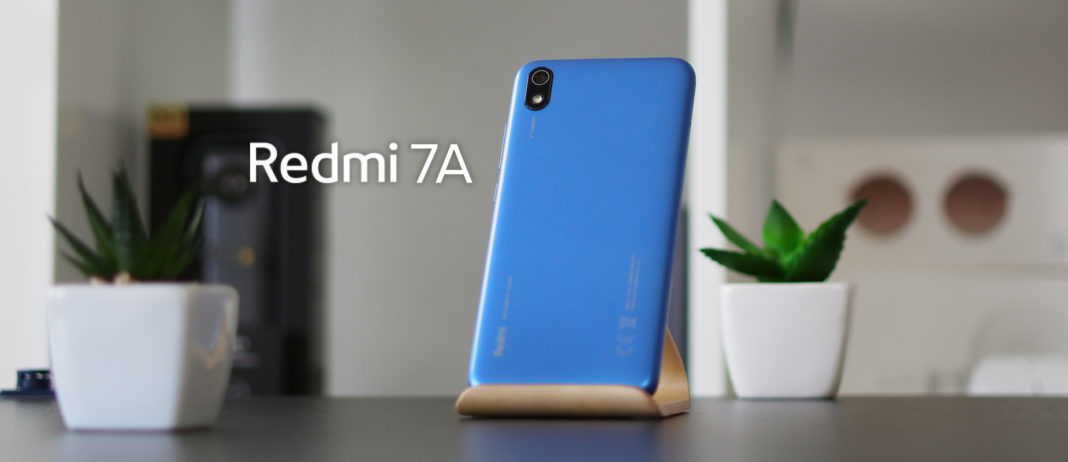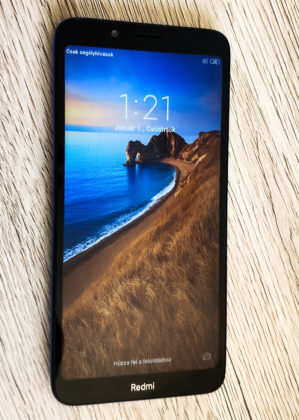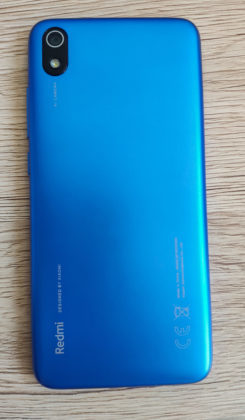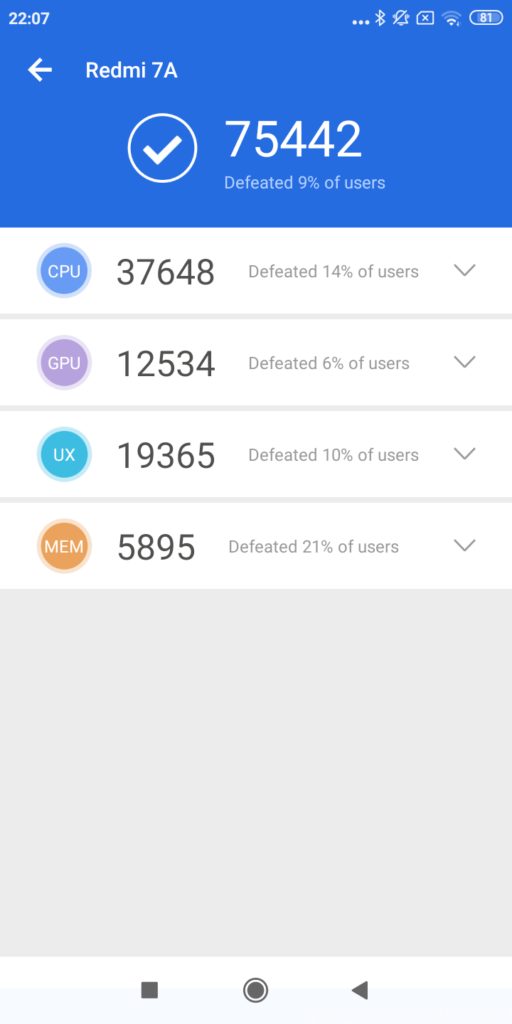A few days ago I was given a special challenge, to take a closer look at a device that is the absolute entry-level model in the Xiaomi range. Since I use a Mi Mix 3 in my everyday life (which was the top of the range when I bought it), I was even more curious to see how much this little phone would try my patience while using it.
Warning, spoiler alert: I was very pleasantly disappointed...really.
Redmi 7A
Hardware
Let's look at the dry facts first: the Global version has a maximum of 2GB of memory, while the Chinese version has 3GB. The red dot is that the dedicated microSD card slot has been retained, which means that in addition to the two nanoSIMs, there is also room for a microSD card. If you take a lot of photos or store a lot of music or series episodes on the back, you can copy them to the memory card.
At the heart of the phone is a Qualcomm Snapdragon 439 (eight cores, max 2GHz), with Adreno 505 graphics acceleration. And for those of you who aren't used to Bluetooth handsets, there's a 3.5mm jack. Let's also say a few words about the display: 5.45" HD+ (720 x 1440 pixels). I guess you can't really expect much more from an entry-level phone (shocking, when you think that my phone cost about 5x as much as this one). It runs Android 9.0 with MIUI 10.2.
Design
The phone itself fits in perfectly with the current Xiaomi phone range, with a design that should be very familiar from the larger models. A rounded, curved plastic back that fits in the palm of your hand, with a slightly chunky body that gives it a better grip than the thinner models. Correct use of materials, which means matt plastic in blue or black. Unfortunately, the matt finish is useless, so it can still be slippery in summer. Unfortunately, the entry-level model doesn't come with a silicone case in the box (as in our previous test, neither Huawei nor Samsung models, which are much more expensive models).
The top and bottom cups are only thick enough to be comfortable to hold when used in a reclined position (when watching video). At the bottom, the first thing you'll find on the bottom of the cavity under the display is a "Redmi" logo (in silver), so you can see what kind of phone you're using from the front. There's no selfie camera on the top edge, which is a huge plus. There is no fingerprint reader on the back, which is not included in the price. This is partially compensated for by the front camera's face unlock, if it's not too dark or backlit.
There's a rear main camera with the usual 12 megapixel resolution, which also uses a Sony sensor to take pictures.
What really shocked me is that the phone has a 4000 mAh Li-Po battery, which with this power-saving hardware can produce a very fair battery life (unusually slow compared to the Mi Mix 3... ? ) Under normal use, it can last 2 days, and I would even risk more.
There aren't many extras in MIUI, but there is a "Reader Mode", increased font size and FM radio. The only thing left out is infra.
How do you use it in everyday life? Under normal load, there is minimal lag compared to the top Snapdragon processors, but if I wasn't used to it, I'd say it's in the usable category. In fact, when I think of my old android phones with 1-2 cores, compared to those, it seems to run at the speed of light.
Camera
Comparing the camera of last year's top model and this year's cheapest model doesn't make much sense. But the following set of images is perfectly good to show that the difference is not tragic. Even the more expensive entry-level models from the competition don't have better image quality.
[twenty20 img1="21290″ img2="21286″ offset="0.5″ before="Mi MIX 3″ after="Redmi 7A"]
[twenty20 img1="21303″ img2="21299″ offset="0.5″ before="Mi MIX 3″ after="Redmi 7A"]
[twenty20 img1="21321″ img2="21325″ offset="0.5″ before="Mi MIX 3″ after="Redmi 7A"]
[twenty20 img1="21333″ img2="21329″ offset="0.5″ before="Mi MIX 3″ after="Redmi 7A"]
[twenty20 img1="21343″ img2="21339″ offset="0.5″ before="Mi MIX 3″ after="Redmi 7A"]
[twenty20 img1="21351″ img2="21347″ offset="0.5″ before="Mi MIX 3″ after="Redmi 7A"]
[twenty20 img1="21359″ img2="21355″ offset="0.5″ before="Mi MIX 3″ after="Redmi 7A"]
[twenty20 img1="21368″ img2="21364″ offset="0.5″ before="Mi MIX 3″ after="Redmi 7A"]
[twenty20 img1="21376″ img2="21372″ offset="0.5″ before="Mi MIX 3″ after="Redmi 7A"]
[twenty20 img1="21386″ img2="21382″ offset="0.5″ before="Mi MIX 3″ after="Redmi 7A"]
[twenty20 img1="21394″ img2="21390″ offset="0.5″ before="Mi MIX 3″ after="Redmi 7A"]
The Mi MIX 3 is often over-saturated and takes mostly HDR images, and the sunset image has a bad white balance mismatch. The Redmi 7A's colours are more natural, although the dynamics are tight and the difference comes out in the drawings. Although the Redmi 7A advertises itself with an AI camera, the current version of MIUI doesn't support it yet, you have to manually select the right subject or use it on a smooth auto. This is expected to be remedied in the next update.
In summary
The Redmi 7A has taken a big step forward from its predecessor, the Redmi 6A, by moving away from the MTK processor and including a Snapdragon SoC in this entry-level handset. The battery size has also been increased by 1000 mAh compared to the predecessor model. The use of materials is fair, the battery life is shocking and the hardware capabilities are plenty for the average user.
Who is it for?
I'd keep it as a second phone, the Mi MIX 3 has so much to offer in terms of both camera and extra features that makes it worth the hefty premium over the Redmi 7A to me. For parents it's quite enough, as I can recommend it for small school children. Grandparents can hardly use all the features the phone has to offer, but it is more suitable for making calls due to the increased speech volume and writing short messages due to the large font size option than more expensive models. At the same time, the large battery and perhaps a slightly more durable plastic back cover mean that I wouldn't regret it for schoolchildren who are not yet so good at taking care of their phones. Roughly 8-10.000 Ft more expensive than a Redmi Note 7 display replacement. So it is more logical to put such a phone in the hands of a child until they can find the money for a more powerful model themselves.
As a "party phone", so to speak, I would feel less sorry for it than the more expensive glass models, if it gets lost or broken.
But it's also recommended for manual workers, because the camera is enough for one documentary and the battery is good for the next day. And if it falls out of your pocket and gets hit by a sharp object, you won't have to pay tens of thousands of dollars to have it repaired. A Mi 9 display replacement, for example, costs 65-70e Ft.
The Redmi 7A entry, 2+16GB version for 32.990 HUF is available, and the 32GB version comes with a surcharge of just HUF 2000. For that price you get a fair, usable smartphone with a 2-year Hungarian warranty.
I've grown very fond of this little phone over the past 1 week, and think back on it with fond memories. It got the recommended category from me.
The test device was provided by xiaomishop.hu. Thank you!























You must be logged in to post a comment.